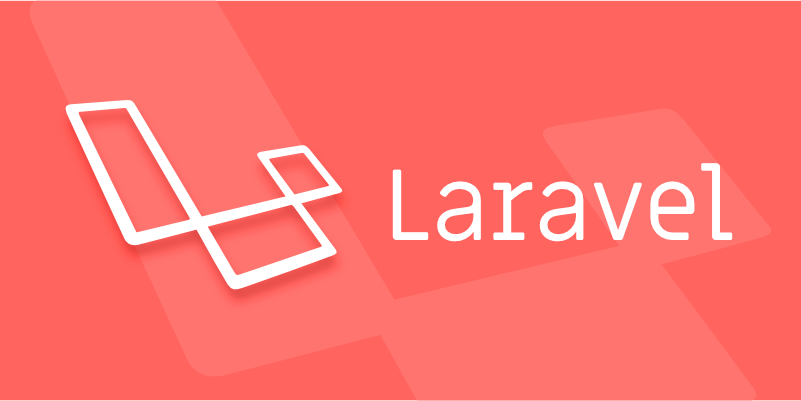What are Action classes in Laravel and why use them?
Jul 28, 2025 am 03:01 AMAction classes in Laravel should be used to encapsulate complex business logic into single-responsibility classes for better code organization. 1. They enforce separation of concerns by moving logic out of controllers. 2. They improve reusability across controllers, commands, and queues. 3. They enable easier testing by isolating business operations. 4. They enhance scalability through clear naming and directory structure. 5. With packages, they can support queuing, event listening, and job dispatching. Use them for multi-step operations or when logic is reused, but avoid for simple CRUD unless standardizing. This approach keeps controllers thin, improves maintainability, and supports clean architecture in medium to large Laravel applications.

Action classes in Laravel are a way to encapsulate specific business logic into single-responsibility classes. Instead of putting complex logic directly in controllers, models, or routes, you move it into dedicated classes—called action classes—that represent a single action or operation in your application.

They’re not built into Laravel by default, but they follow a design pattern that many developers adopt (often using packages like laravel-actions or spatie/laravel-artisan-ddd) to improve code organization and maintainability.
? Why Use Action Classes?
1. Separation of Concerns
Controllers should handle HTTP concerns—like validation, redirects, and responses—not complex business logic.

Instead of this:
// In a controller
public function store(Request $request)
{
$data = $request->validate([...]);
$order = Order::create([...]);
Inventory::decrement('stock', $data['quantity']);
PaymentGateway::charge($order);
Notification::send($order->user, new OrderConfirmed($order));
return redirect()->back();
}You do this:

// In a controller
public function store(StoreOrderRequest $request)
{
$order = StoreOrderAction::run($request->validated());
return redirect()->back();
}All the logic lives in StoreOrderAction, keeping the controller clean.
2. Reusability
You can reuse the same action from different places—API endpoints, Artisan commands, queues, or other actions.
For example:
// From a controller $order = StoreOrderAction::run($data); // From an Artisan command $order = StoreOrderAction::run($input->getArguments());
Same logic, no duplication.
3. Testability
With all logic in one class, you can test the business operation in isolation—without hitting routes or mocking HTTP layers.
public function test_it_creates_an_order_and_updates_inventory()
{
$order = StoreOrderAction::run([...]);
$this->assertDatabaseHas('orders', [...]);
$this->assertEquals(9, Inventory::first()->stock);
}Clean, fast, focused tests.
4. Better Organization and Scalability
As your app grows, controllers and models become bloated. Action classes help you scale by organizing logic around what’s happening, not where it’s called from.
Common naming patterns:
CreateUserActionProcessPodcastUploadActionSendEmailReminderAction
You can even group them with directories like Actions/Orders/, Actions/Users/, etc.
5. Support for Jobs, Listeners, and More (with packages)
Some packages (like laravel-actions) let you define actions that can:
- Be queued (
implements ShouldQueue) - Be used as event listeners
- Automatically create jobs or listeners from the same class
Example:
class SendWelcomeEmailAction implements ShouldQueue
{
public function handle(User $user): void
{
Mail::to($user)->send(new WelcomeEmail);
}
}Now you can dispatch it like a job:
SendWelcomeEmailAction::dispatch($user);
? When Should You Use Them?
Use action classes when:
- An operation involves multiple steps or models
- The same logic is needed in more than one place
- Your controller or model method is getting too long
- You want clearer, more maintainable code
Don’t overuse them for simple CRUD operations unless you're standardizing across the app.
Summary
Action classes help you:
- Keep controllers thin
- Organize business logic
- Reuse and test code more easily
- Scale your app cleanly
They’re a best practice for clean Laravel architecture, especially in medium to large applications.
Basically, if something does something important, make it an action—it makes your app easier to understand and change later.
The above is the detailed content of What are Action classes in Laravel and why use them?. For more information, please follow other related articles on the PHP Chinese website!

Hot AI Tools

Undress AI Tool
Undress images for free

Undresser.AI Undress
AI-powered app for creating realistic nude photos

AI Clothes Remover
Online AI tool for removing clothes from photos.

Clothoff.io
AI clothes remover

Video Face Swap
Swap faces in any video effortlessly with our completely free AI face swap tool!

Hot Article

Hot Tools

Notepad++7.3.1
Easy-to-use and free code editor

SublimeText3 Chinese version
Chinese version, very easy to use

Zend Studio 13.0.1
Powerful PHP integrated development environment

Dreamweaver CS6
Visual web development tools

SublimeText3 Mac version
God-level code editing software (SublimeText3)

Hot Topics
 Creating Custom Validation Rules in a Laravel Project
Jul 04, 2025 am 01:03 AM
Creating Custom Validation Rules in a Laravel Project
Jul 04, 2025 am 01:03 AM
There are three ways to add custom validation rules in Laravel: using closures, Rule classes, and form requests. 1. Use closures to be suitable for lightweight verification, such as preventing the user name "admin"; 2. Create Rule classes (such as ValidUsernameRule) to make complex logic clearer and maintainable; 3. Integrate multiple rules in form requests and centrally manage verification logic. At the same time, you can set prompts through custom messages methods or incoming error message arrays to improve flexibility and maintainability.
 Adding multilingual support to a Laravel application
Jul 03, 2025 am 01:17 AM
Adding multilingual support to a Laravel application
Jul 03, 2025 am 01:17 AM
The core methods for Laravel applications to implement multilingual support include: setting language files, dynamic language switching, translation URL routing, and managing translation keys in Blade templates. First, organize the strings of each language in the corresponding folders (such as en, es, fr) in the /resources/lang directory, and define the translation content by returning the associative array; 2. Translate the key value through the \_\_() helper function call, and use App::setLocale() to combine session or routing parameters to realize language switching; 3. For translation URLs, paths can be defined for different languages ??through prefixed routing groups, or route alias in language files dynamically mapped; 4. Keep the translation keys concise and
 Working with pivot tables in Laravel Many-to-Many relationships
Jul 07, 2025 am 01:06 AM
Working with pivot tables in Laravel Many-to-Many relationships
Jul 07, 2025 am 01:06 AM
ToworkeffectivelywithpivottablesinLaravel,firstaccesspivotdatausingwithPivot()orwithTimestamps(),thenupdateentrieswithupdateExistingPivot(),managerelationshipsviadetach()andsync(),andusecustompivotmodelswhenneeded.1.UsewithPivot()toincludespecificcol
 Sending different types of notifications with Laravel
Jul 06, 2025 am 12:52 AM
Sending different types of notifications with Laravel
Jul 06, 2025 am 12:52 AM
Laravelprovidesacleanandflexiblewaytosendnotificationsviamultiplechannelslikeemail,SMS,in-appalerts,andpushnotifications.Youdefinenotificationchannelsinthevia()methodofanotificationclass,andimplementspecificmethodsliketoMail(),toDatabase(),ortoVonage
 Understanding and creating custom Service Providers in Laravel
Jul 03, 2025 am 01:35 AM
Understanding and creating custom Service Providers in Laravel
Jul 03, 2025 am 01:35 AM
ServiceProvider is the core mechanism used in the Laravel framework for registering services and initializing logic. You can create a custom ServiceProvider through the Artisan command; 1. The register method is used to bind services, register singletons, set aliases, etc., and other services that have not yet been loaded cannot be called; 2. The boot method runs after all services are registered and is used to register event listeners, view synthesizers, middleware and other logic that depends on other services; common uses include binding interfaces and implementations, registering Facades, loading configurations, registering command-line instructions and view components; it is recommended to centralize relevant bindings to a ServiceProvider to manage, and pay attention to registration
 Understanding Dependency Injection in Laravel?
Jul 05, 2025 am 02:01 AM
Understanding Dependency Injection in Laravel?
Jul 05, 2025 am 02:01 AM
Dependency injection automatically handles class dependencies through service containers in Laravel without manual new objects. Its core is constructor injection and method injection, such as automatically passing in the Request instance in the controller. Laravel parses dependencies through type prompts and recursively creates the required objects. The binding interface and implementation can be used by the service provider to use the bind method, or singleton to bind a singleton. When using it, you need to ensure type prompts, avoid constructor complications, use context bindings with caution, and understand automatic parsing rules. Mastering these can improve code flexibility and maintenance.
 Strategies for optimizing Laravel application performance
Jul 09, 2025 am 03:00 AM
Strategies for optimizing Laravel application performance
Jul 09, 2025 am 03:00 AM
Laravel performance optimization can improve application efficiency through four core directions. 1. Use the cache mechanism to reduce duplicate queries, store infrequently changing data through Cache::remember() and other methods to reduce database access frequency; 2. Optimize database from the model to query statements, avoid N 1 queries, specifying field queries, adding indexes, paging processing and reading and writing separation, and reduce bottlenecks; 3. Use time-consuming operations such as email sending and file exporting to queue asynchronous processing, use Supervisor to manage workers and set up retry mechanisms; 4. Use middleware and service providers reasonably to avoid complex logic and unnecessary initialization code, and delay loading of services to improve startup efficiency.
 Handling exceptions and logging errors in a Laravel application
Jul 02, 2025 pm 03:24 PM
Handling exceptions and logging errors in a Laravel application
Jul 02, 2025 pm 03:24 PM
The core methods for handling exceptions and recording errors in Laravel applications include: 1. Use the App\Exceptions\Handler class to centrally manage unhandled exceptions, and record or notify exception information through the report() method, such as sending Slack notifications; 2. Use Monolog to configure the log system, set the log level and output method in config/logging.php, and enable error and above level logs in production environment. At the same time, detailed exception information can be manually recorded in report() in combination with the context; 3. Customize the render() method to return a unified JSON format error response, improving the collaboration efficiency of the front and back end of the API. These steps are






